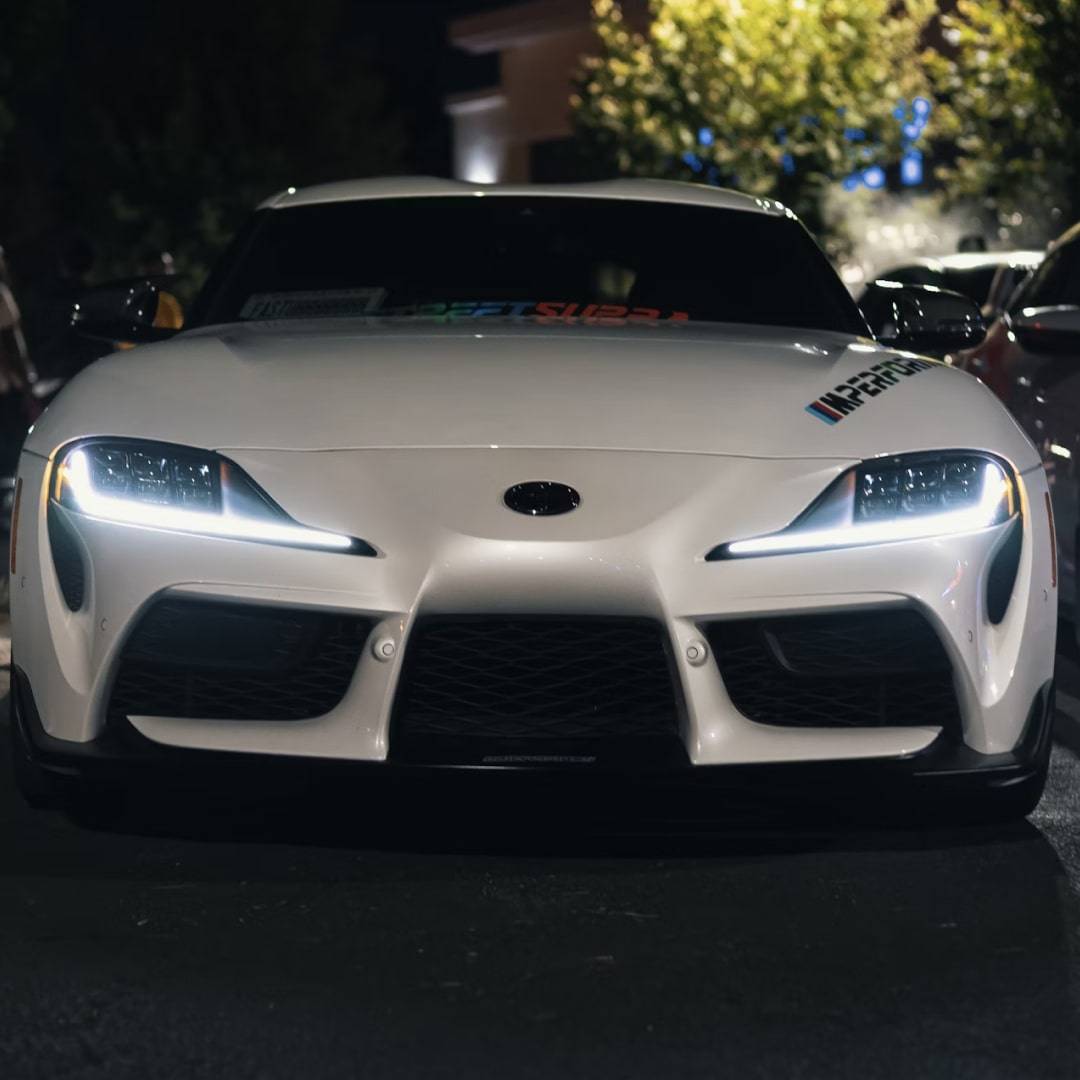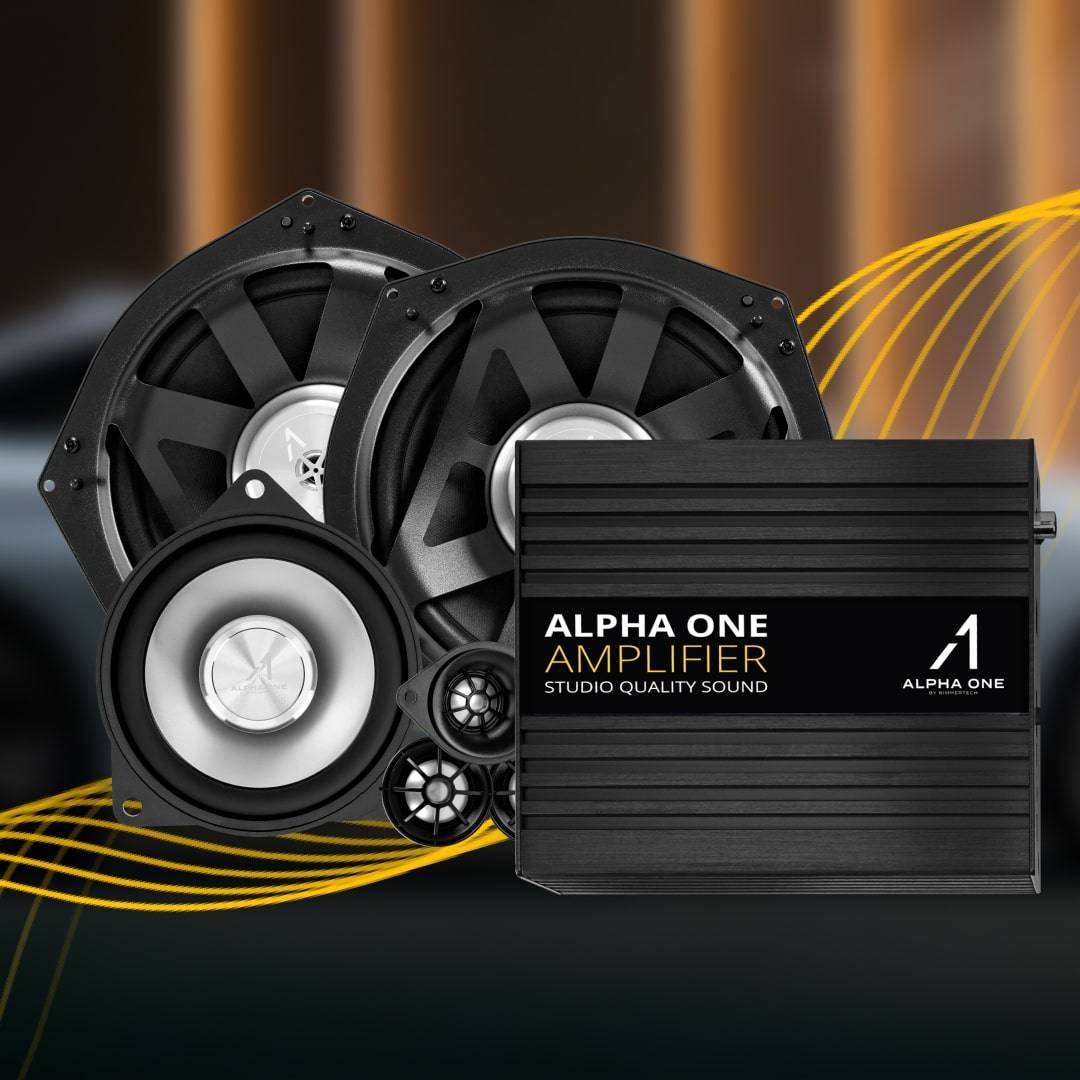[[post.title]]
Jul 15, 2024

A love child of BMW and Toyota, Supra’s latest iteration is one hell of a fun car.
Slightly lighter, cheaper, and less posh than its Bavarian sibling, the Z4 roadster, this Japanese coupe offers something else apart from nimble sportiness. Yup, that’s right: a stiffer chassis with a fixed roof.
Such a design difference should make it handle better than the BMW Z4, no doubt. But we are not going to be discussing the handling of these two cars today. Instead, we’re going to take a look at how they stack up against each other in terms of audio systems.
After all, you should be able to enjoy your music better in an enclosed cabin, right…?

 Although neither Toyota nor BMW disclose exactly how much these two cars have in common, they also don’t really hide the fact that Z4 (G29) and Supra (J29) are siblings. Guess mommy and daddy love each other very much and aren’t ashamed of their children ;) In all seriousness though, if we were to take a closer look at both, a lot of important mechanical components are shared between the two vehicles.
Although neither Toyota nor BMW disclose exactly how much these two cars have in common, they also don’t really hide the fact that Z4 (G29) and Supra (J29) are siblings. Guess mommy and daddy love each other very much and aren’t ashamed of their children ;) In all seriousness though, if we were to take a closer look at both, a lot of important mechanical components are shared between the two vehicles.
Starting with the aforementioned chassis or rather the Cluster Architecture (CLAR) platform, through engines and transmission, all the way to suspension parts, which are also partially common with the BMW M2. As a result, the Toyota Supra uses the same 3.0L straight-six BMW B58 engine pumping out either 335 hp or 382 hp (depending on the version) and the renowned 8-speed ZF transmission as the Z4 (and many other BMWs).
Granted, the Japanese did introduce some improvements to the original design.
For example: well-aware of the hit-and-miss reliability reputation the BMW powerplants sometimes have, Toyota’s engineers thoroughly tested the BMW B58. And we mean THOROUGHLY – they took one unit to their secret lab and disassembled it down to every last bolt. Impressively enough, it even earned their seal of approval. In the Toyota Supra, the engine itself also received a proprietary tune, as did the transmission and suspension.
Okay, okay, but that’s enough about all the drivetrain- or chassis-related changes. There is one more thing that sets the two apart – their sounds systems, so what you actually came here for.

 Talking about audio setups, both the BMW Z4 and Toyota Supra could be configured with a couple of different options. This means Base, Hi-Fi (S676A), or Harman Kardon (S688A) for the former and Base, Hi-Fi (S676A), or JBL (S677A) as a high-end pick for the latter. In both instances, the audio option availability varied somewhat depending on the year of production and the head unit type.
Talking about audio setups, both the BMW Z4 and Toyota Supra could be configured with a couple of different options. This means Base, Hi-Fi (S676A), or Harman Kardon (S688A) for the former and Base, Hi-Fi (S676A), or JBL (S677A) as a high-end pick for the latter. In both instances, the audio option availability varied somewhat depending on the year of production and the head unit type.
What does it mean?
Well, some of the early BMW Z4s of the G29 generation came with the ENAVEVO head unit. These could be paired with either Base or the Hi-Fi (S676A) audio systems. For the iDrive 7 and MGU head unit, the Harman Kardon (S688A) pushed the Hi-Fi down the hierarchy in the model brochures, making it replace the Base altogether.
Similar to the BMW Z4, in the ENAVEVO Supras the sound was played through Base or S676A Hi-Fi setups, so nothing impressive as well. However, things start to get more interesting when we turn our attention to the JBL-equipped Toyota Supra (J29) which has the NBT Evo head unit with iDrive 6 onboard. As mentioned above, this audio is codenamed S677A – a clear giveaway that we’re dealing with an optical system.
…But we’ll talk about what it means for the sound quality of the Supra’s audio and compare its premium system to that of the BMW Z4 in just a bit. First, let’s do a brief rundown of these systems (if you’d like to learn more, check out our article comparing BMW Hi-Fi to HK and others).
As you can see, out of all the available setups, the low-end ones are mostly the same for the BMW Z4 and Toyota Supra. That’s why we’re going to move on to the main subject and focus on comparing the high-tier audio setups installed in these cars right now!
Instead of the Harman Kardon, Toyota Supra buyers get a JBL-branded sound system as the highest available option. Interestingly, this setup comes standard in the 3.0 Premium trim, which is currently the lowest trim you can get with the inline-six engine. For the smaller 2.0L engine it’s optional.
The speaker layout of JBL’s Toyota Supra audio is similar to the one found in Z4s equipped with the S688A option. Placed around the cabin you’ll find:
What’s different lies in the heart of the setup, namely the amplification method and the fact that in the S677A the sound is transferred via fiber optic cables. As mentioned above, JBL Supras come with a 10-channel amp that has a claimed power of 500W. To put that into perspective, the RAM unit found in the iD7 Harman Kardon systems is usually marketed as having a power output of 464W.
However, the power isn’t as important as the system's architecture. The optical signal transfer results in far better audio quality in Supras when compared to the Z4. Heck, even the basic systems from Toyota sound better than the low-tier BMW Z4 options.
That being said: just like in the case of the older S677A bimmers, there is always room for improvement, especially if you crave the perfect musical experience. And since Toyota shares its audio architecture with the Bavarians, you aren’t left with Toyota’s stock solutions!

Due to the shared internal and electronic architecture of both vehicles, speakers or amplifiers meant for the BMW Z4 (G29) will also fit the Toyota Supra (J29). This is why in our lineup of Alpha One sound system enhancements you will find everything necessary for a complete overhaul of your audio setup.
Check out the table below to see the specs of our Toyota Supra speaker upgrades.
| Component | Speaker size | Impedance | Sensitivity | RMS power | Peak power |
| Alpha One A10 Tweeters | 25 mm (1”) | 4 Ohm | 85 dB | 15W | 30W |
| Alpha One A40 & A45 Midrange Speakers | 100 mm (4”) | 4 Ohm | 88 dB | 25W | 50W |
| Alpha One A90 Woofers | 229 mm (9”) | 7 Ohm | 89 dB | 50W | 100W |
When it comes to the amplifier upgrade, your Supra will be compatible with either one of two options, depending on the factory setup. For the analog S676A, we have the Alpha One UP8 Amplifier, while for the optical S677A option, our Alpha One Lightwave Amplifier will be the perfect match, allowing for a ton of customization.
Interested to see what the installation process for our speakers looks like? We have an in-depth guide specifically for the Toyota Supra (J29), where we install all of the speakers listed in the table above – minus the amplifier. Be sure to check it out:

Upgrading the audio setup of the Toyota Supra (J29) can significantly enhance the way you listen to your favorite tunes. Going for higher-quality tweeters, midrange speakers, and woofers will result in clearer highs, more defined midrange, deeper bass, as well as greater clarity and detail. This, in turn, will provide you with a much more immersive musical experience.
So, if you prioritize audio quality and enjoy a premium listening experience while driving, upgrading the audio setup of your Toyota Supra will definitely be a worthwhile investment. Want to learn more about the Alpha One speakers and amplifier for your car? Visit our website and decode your VIN to receive model-specific info!
Customer Reviews
Comments
Rate the product
This email is already registered.
Please Log In to continue.
Categories:
[[cat.label]] ([[cat.data.length]])Popular posts:
Newsletter
Customer Reviews
Comments
Rate the product
This email is already registered.
Please Log In to continue.
112-[[comment.name]]
[[comment.text|raw]]
BimmerTech
Newsletter
112-[[comment.name]]
[[comment.text|raw]]
BimmerTech